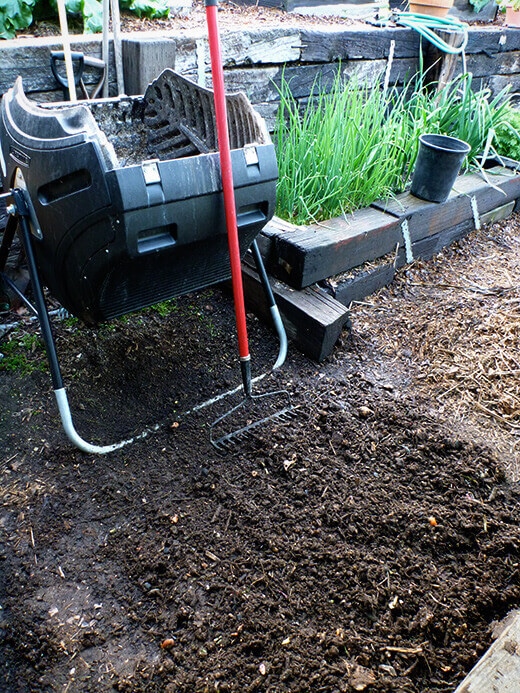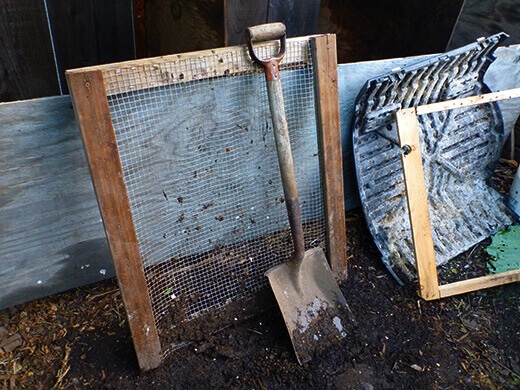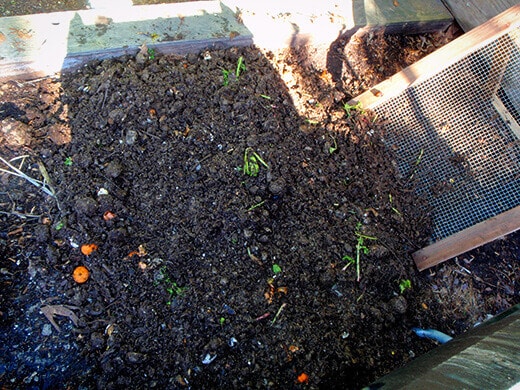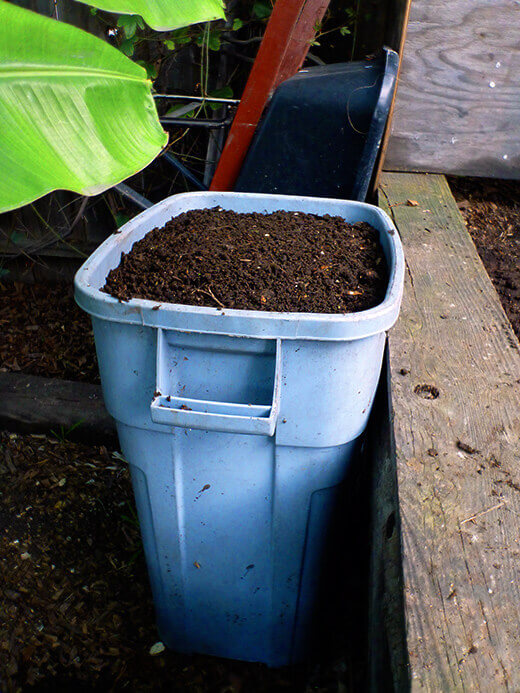Spring is a big and busy time around here: I pull up old plants, rake over beds, amend the soil, sow rows of seeds, and watch over seedlings. For most of March and April, I’m constantly dealing with dirt under my nails and mud stuck to my Bogs. (Hence, you will almost always see me in pictures with a manicure, as the polish helps hide unsightly nails. It sounds strange, but I’d go crazy if I could see how they actually looked after I’d just repotted a hundred plants.)
One task I happily hand over to my husband, however, is managing our main compost heap. We have a few compost heaps going on all over the yard, all year long, from our vermicompost to our chicken manure to our leaf mold to our tumbler (plus a few piles of dead plants we pull up every season).
The tumbler is where we add our wood ash and kitchen scraps, and twice a year we dump it all out and collect all the compost it’s created.

Most of the time, we get a heap of fine, crumbly, beautiful black earth that’s ready for the garden. But other times, there are still bits of moldy oranges or rotting squash buried in the mix, not fully digested yet. Maybe we’ll even find a few twigs or rocks in there.

While it’s not always necessary to sift your compost before spreading it in the garden, it makes a better planting medium without all those lumps and clumps, and also makes sure that only finished compost goes into the soil. Sifting also aerates the compost, improving the soil structure of your garden beds.
To sift our compost, we made a sifting screen out of three 2x4s and a sheet of 1/2-inch hardware cloth stapled to the frame. The reason we have a three-sided frame (instead of a more common four-sided frame) is for ease of use with a shovel.

We (and by we, I really mean he − the hubs) prop the screen up at a 45° angle, shovel a layer of compost over the screen, then use the flat end of the shovel to “grate” the compost against the hardware cloth. Finished compost falls through the screen, while unfinished compost falls back to the ground.

When all is sifted and done, the finished compost is shoveled into a separate bin for future use, while the unfinished compost is put back in the tumbler as a starter for next season’s scraps.


From the tumbler alone, we usually fill a large trash bin with enough compost to amend a couple of raised beds. The compost is heaped onto the soil as a top layer several inches thick, thoroughly watered in, and left to rest for a few days before we start planting.
Next week, we’ll tackle the composted chicken manure. What are your garden chores this spring?















